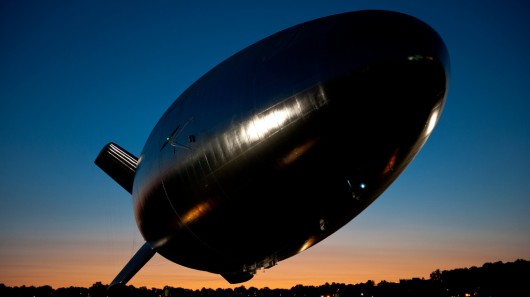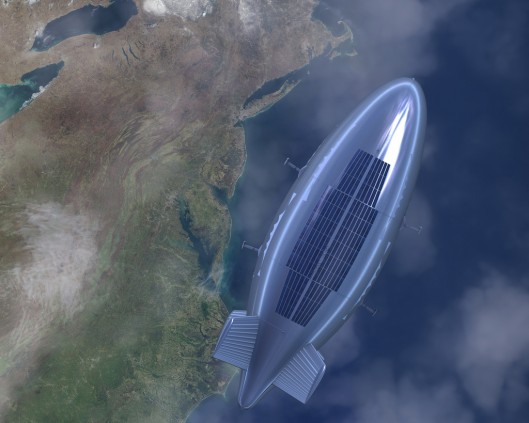With the use of airships for passenger transport decreasing in the early 20th century as their capabilities were eclipsed by those of airplanes – coupled with a number of disasters – they were largely resigned to serving as floating billboards or as camera platforms for covering sporting events. But the ability to hover in one place for an extended period of time also makes them ideal for intelligence, surveillance and reconnaissance purposes, which is why Lockheed Martin has been developing its High Altitude Airship (HAA). The company yesterday launched the first-of-its-kind High Altitude Long Endurance-Demonstrator (HALE-D) to test a number of key technologies critical to development of unmanned airships.

Lockheed Martin launched its HALE-D at 5:47 a.m. on July 27, 2011 out of an airdock in Akron, Ohio. The airship was aiming to reach an altitude of 60,000 ft. but encountered technical difficulties at 32,000 ft., which prevented it from reaching its target so the flight was terminated. It then descended at 8.26 a.m., landing in southwestern Pennsylvania at a predetermined location. Lockheed Martin is coordinating with state and local authorities to recover the airship from the heavily wooded area in which it landed, but confirmed that no injuries or damage were sustained.
“While we didn’t reach the target altitude, first flights of new technologies like HALE-D also afford us the ability to learn and test with a mind toward future developments,” said Dan Schultz, vice president ship and aviation systems for Lockheed Martin’s Mission Systems & Sensors business. “We demonstrated a variety of advanced technologies, including launch and control of the airship, communications links, unique propulsion system, solar array electricity generation, remote piloting communications and control capability, in-flight operations, and controlled vehicle recovery to a remote un-populated area.”

Lockheed Martin has built more than 8,000 lighter-than-air platforms since receiving its first production contract in 1928. The U.S. Army Space and Missile Defense Command/Army Forces Strategic Command (SMDC/ARSTRAT) contracted with Lockheed Martin to develop the High Altitude Airship program to improve the military’s ability to communicate in remote areas such as those in Afghanistan, where mountainous terrain frequently interferes with communications signals.

 Follow
Follow